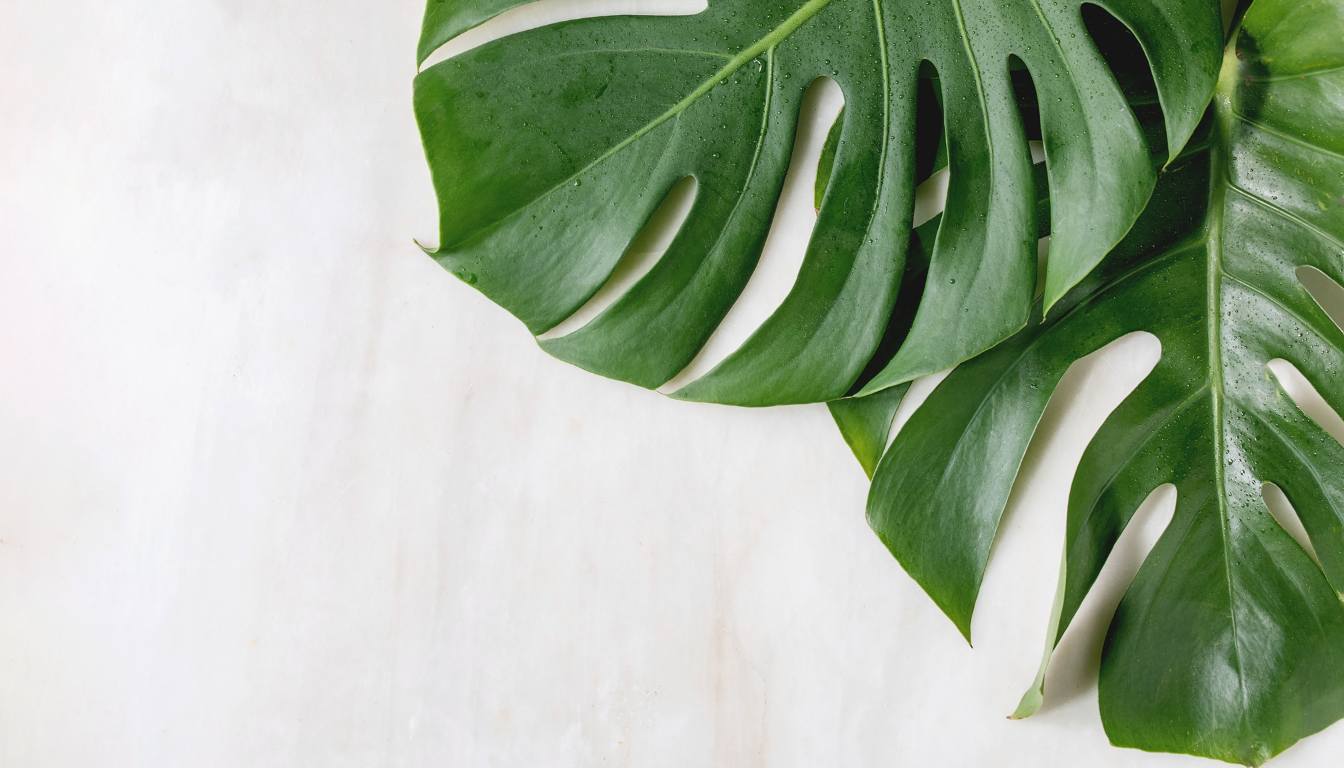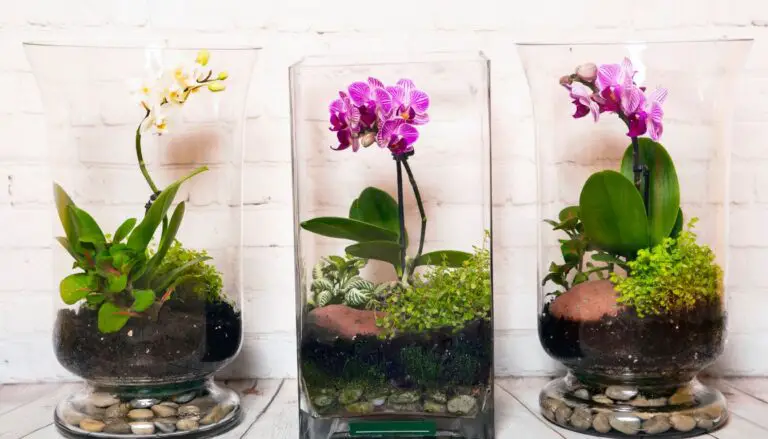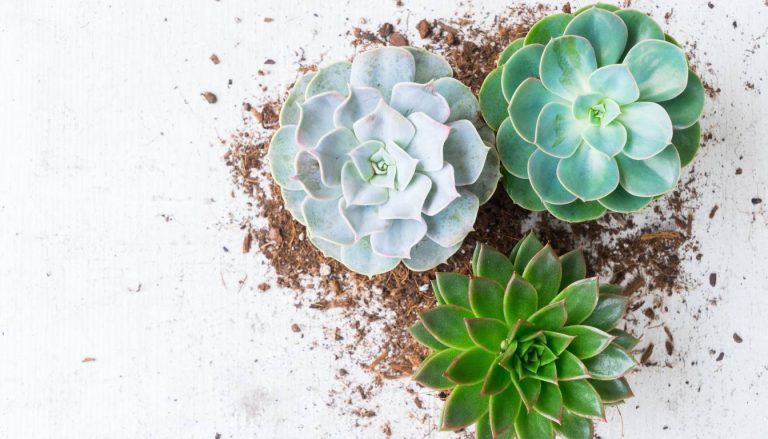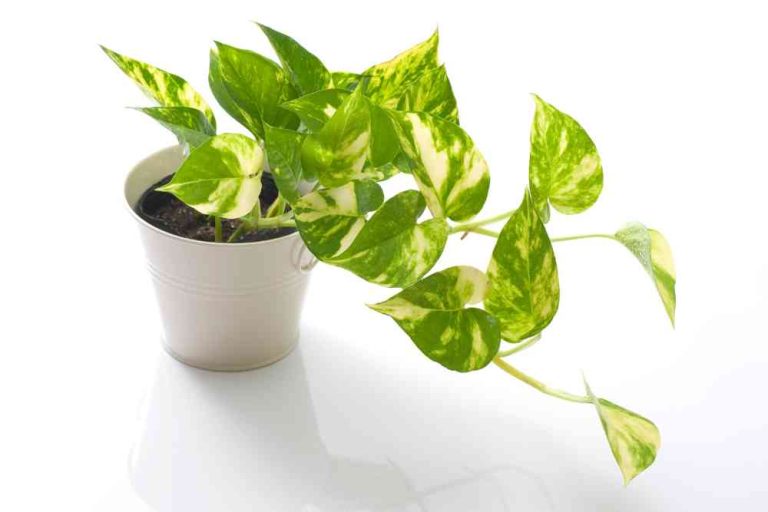How To Get Rid Of Rust Fungus On Monstera – 15 Tips and Tricks
When it comes to houseplants, it is especially unfortunate when the leaves get discolored. Though there are other reasons as well, fungal rust is frequently the source of leaf spots.
For both gardeners and plant enthusiasts, rust fungus on Monstera plants is a frequent issue. Leaves may get discolored and stop growing due to this unpleasant fungus, which can be brought on by environmental stressors or other factors. But do not worry—there are ways to battle the rust fungus and keep your Monstera healthy. Discover effective techniques on how to get rid of rust fungus on Monstera plants to ensure their health and vitality.
Rust Fungus: How Does It Appear?
Examine your Monstera closely if you suspect rust. Tiny, orange-red dots on leaves are typically the hallmark of rust fungi. The patches could have a powdery texture and be elevated or sunken. The dots may combine in extreme circumstances to form broad rust-colored fungal areas.
Additionally, the fungus has the ability to spread to the plant’s stems, turning them red or orange. However, this fungus can cause red or black patches on leaves. The entire leaf may become covered with the fungus if treatment is not received. Since more moisture may build up there, it usually first appears on the underside of the leaves.
Since there may be more moisture accumulation there, rust typically appears on the underside of the leaves. It can also form in parts of the plant with low air circulation, such as where a leaf stem joins the main stem or behind a bigger leaf.
You may have rust fungus if you see that your Monstera plant is beginning to get brown or orange patches on its leaves. Fortunately, there is a simple solution for this prevalent issue that can impact a wide variety of plant species.
Why Does Monstera Develop Rust Fungus?

Overwatering, over-humidification, and inadequate light and circulation are a few factors that can lead to rust fungus on Monstera. The disease most frequently affects the leaves but can also extend to the stems, flowers, and fruits.
They are often not fatal diseases, but they do make your plant appear unpleasant. The Monstera Laniata and Lechleriana types may both experience the same problem. Continue reading to learn the specific causes of rust fungus:
Inadequate Airflow
Air circulation is essential for all plants. The most prevalent conditions that affect leaves that don’t get enough light and air include fungal rust, plant diseases, and insect infestation. That’s why it’s crucial to prune your plants.
It creates openings that allow air to enter and circulate throughout the plant. Another thing to remember is to avoid putting your plants in small spaces. Furthermore, avoid putting two or more plants very close to one another.
Insufficient Light
Throughout the day, this plant needs strong, indirect light. This light is necessary not only for photosynthesis but also for the evaporation of surplus moisture. Water droplets on the leaves do not evaporate in low-light circumstances. This produces the ideal conditions for the development of bacteria.
Excessive Heat and Moisture Content
Humidity and warmth are the two main requirements for the growth of all fungi. Monstera requires more than 50% humidity and a constant temperature of 70 to 80 degrees Fahrenheit for healthy growth. However, if you overwater or mist your plant excessively, these conditions will result in the development of this disease.
Read – Using a Humidity Tray for Indoor Plants
Overwatering
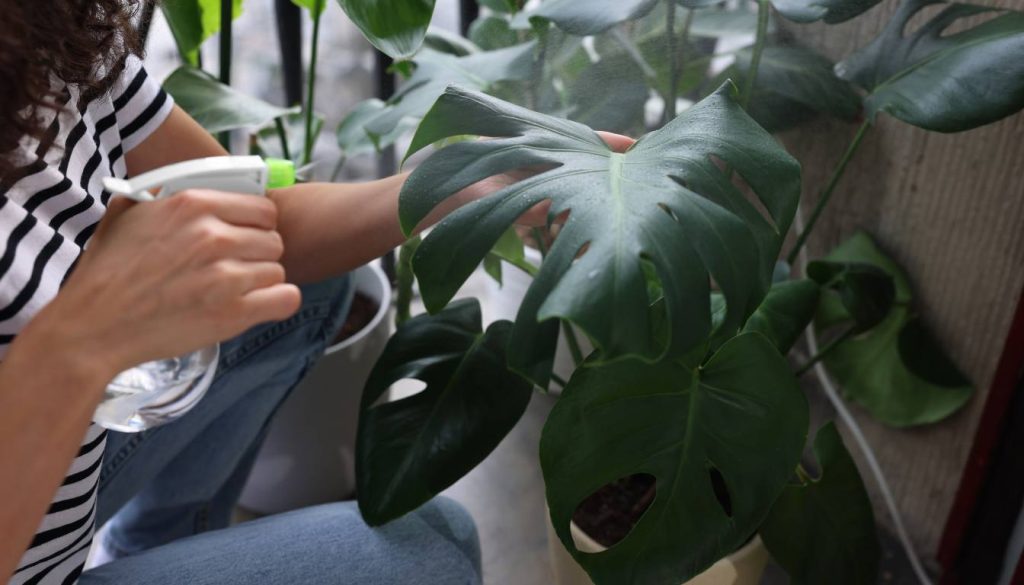
If you give the plant too much water, the soil will remain excessively moist all the time. This kind of soil is perfect for the growth and quick multiplication of the several types of fungi that cause rust. Moreover, it triggers the emergence of more serious issues, such as quickly damaging root rot.
Read – 9 DIY Automatic Watering System for Indoor Plants
Monstera leaves may also turn black, but this is a manageable issue. Make sure your soil is dry at the top 3 to 4 inches of the surface. Only after that should you water it again. When watering, ensure the drainage of the soil and the pot is not obstructed or affected. The excess water should be out of the drainage hole at the bottom.
Misting Late in the Day
Sometimes, you must mist your plants to ensure they have the right amount of humidity. However, inappropriate misting will cause your plant to develop rust and other fungal problems, such as powdery mildew and leaf spot disease.
Always mist before noon. This will give the water droplets enough time to evaporate before night thoroughly. Misting late in the evening results in droplets remaining on the plant all night. Naturally, this results in fungus colonizing your plant and spreading infection.
Also, spray the plant softly each time. Some people give their plants baths instead of misting them, which ends up being very harmful over time.
Transferred by Infected Tools
You may have used gardening tools on many plants without cleaning them in between. One of the main ways that infections spread from one plant to another is through this harmful behavior. An effective technique to stop rust fungus is thoroughly cleaning and sanitizing instruments before using them.
Ensure you always wash your equipment with water and soap that has fungicidal and bactericidal properties. Also, apply a high-quality disinfection solution afterward. As an alternative, rubbing alcohol is also effective. When it comes to our gardening tools, we always use 70% isopropyl alcohol.
Transmission of Infection From another Plant
This is just one more popular way that your plant could become infected. Spores of rust can fly through the air and spread to neighboring plants. That’s why you should separate it as soon as a plant exhibits symptoms.
Treating Rust Fungus on Monstera
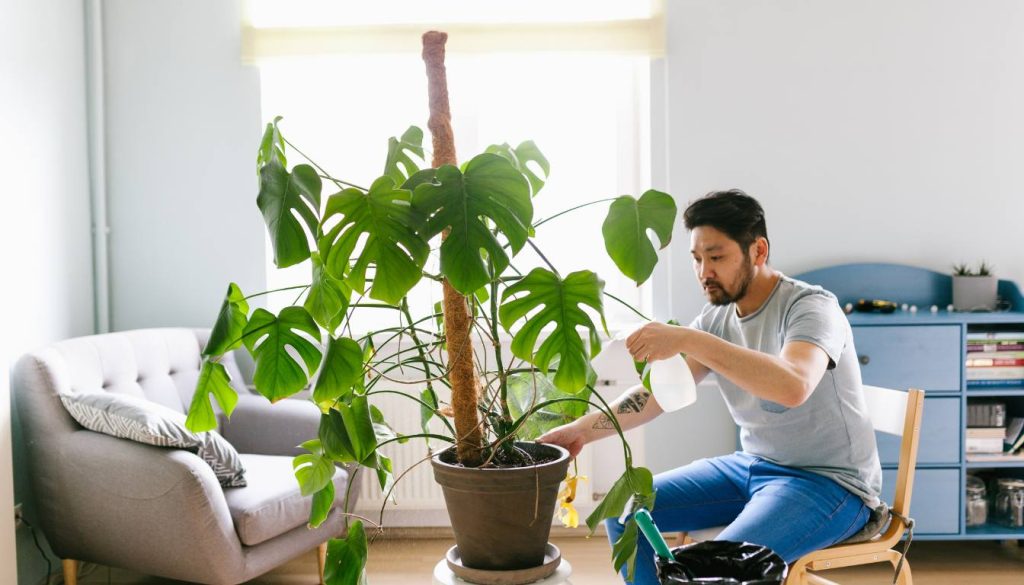
Preventive measures are the best kind of treatment. Therefore, you’ll need to treat your Monstera as soon as you notice those rust-colored patches. Here are the steps to take.
Prune Affected Leaves and Plant Parts
First, take off the affected leaves from the plant that has rust spots to begin treating the infection. You have two options: slice off the entire leaf or just the most severely affected portion. You should cut off only the most severely affected sections of your plant if the majority of it is diseased; otherwise, it may not be able to survive.
You cannot utilize the trimmed leaves or plant pieces for anything else, including composting or mulching. Otherwise, you risk spreading rust through your entire compost pile. It is preferable to just burn these debranched plant components.
When pruning, always use sharp gardening shears or knives. This will significantly reduce the amount of effort required. Remember to sanitize them. When done, use them completely. For disinfection, we advise using 70% isopropyl alcohol.
Place Pruned Plants in an Appropriate Environment.
Placing a monstera in a suitable setting is the most important step in treating it for rust fungus infection. Otherwise, your Monstera will not recover in strength, and the fungi will continue to thrive. Therefore, put your Monstera in a room with good ventilation and bright indirect light.
Prune it frequently for better air circulation and light penetration throughout the plant. Water your Monstera only when the soil has dried to a depth of 1-2 inches. If the soil where your Monstera grows is not well drained, move it to a container that can easily drain extra water and soil.
Isolate the Affected Plant
Rust-causing fungus spores spread swiftly and easily between plants. Isolating the sick plant is crucial for this reason. If not, you’ll quickly discover that the rust is also affecting the remaining plants in your garden. You should relocate the infected plant to a different room completely.
Make sure it’s a reasonable distance from the rest of your collection if that’s not feasible. Make sure that any gardening implement or instrument that comes into contact with a plant that has brown spots is thoroughly cleansed and disinfected. Use these instruments on another plant only after that.
Use Baking Soda as a Spray
Since baking soda is a strong fungicide, it may prevent and eradicate rust fungus. But using it as a fungicide, combining four teaspoons of baking soda, one ounce of horticultural oil, and one gallon of water in a spray container works well.
This solution needs to be sprayed once a week for three to four months. Lightly spray the entire plant, taking care not to miss any areas. The rust fungus patches will eventually become less noticeable until they vanish.
Apply Neem Oil
Neem oil is another safe and effective natural fungicide. It won’t damage your Monstera and can eliminate rust fungus along with all other diseases and infestations. You can fill a spray bottle with one liter of water and one teaspoon of neem oil.
The affected plant should then be sprayed once a week. After your Monstera has healed, you can limit spraying to every two weeks. In this manner, you can prevent reinfection.
Use Chamomile Tea
Another natural antifungal is chamomile. You can use it if you don’t want to expose your plant to harsh chemicals like sodium bicarbonate. The majority of kitchens also have it, but if not, you can easily buy it from your neighborhood grocery store.
Take some chamomile and boil it in water. After letting the tea cool to room temperature, transfer it to a spray bottle. Apply a small amount of this tea to your plant regularly, and you should soon see a noticeable reduction in symptoms.
It will take a few weeks to notice any benefits from chamomile tea, just like with other natural medicines. Fungal rust frequently causes leaves to turn yellow, and it might take months for them to change back to their original color.
Use an Aspirin Spray
Rust disease is another type of headache that Aspirin can treat effectively. You can use over-the-counter Aspirin to treat these brown areas. To get the greatest effect, the aspirin tablets should ideally be uncoated.
So, how do you take Aspirin correctly now? In a gallon of water, dissolve two to four aspirin tablets. Once you start to see some improvement, fill a spray bottle with this fungicidal combination and spray every other day.
Another option is diluting Aspirin in water and applying it to the affected monstera leaves. However, we do not encourage using this strategy. Aspirin burn is a typical occurrence, and you don’t want to expose your plant to it.
Use Chemical Fungicides to Prevent
Once rust symptoms show, chemical fungicides are no longer effective. They can, however, keep the infection under control. For this reason, chemical fungicides should ideally be used as soon as new growth starts or after leaf drop. Even if the fungus is present in the plant, it cannot reproduce and spread this way.
- Use Sulfur-Based Fungicide: Sulfur-based fungicides, particularly those for rust fungus, are also efficient against the growth of fungal spores. Large amounts of copper can be obtained from sulfur-based fungicides. However, they are less damaging to both plants and humans. Some sulfur fungicides are meant to be sprayed directly on plants, while others must be diluted with water and applied topically. They are available in powder form.
- Copper fungicides effectively treat rust fungus and other fungal and bacterial infections. A copper fungicide should only be purchased from reliable suppliers, and the label’s instructions should be followed to the point. Most importantly, use protective clothes and eye goggles when spraying copper fungicides. You should also be aware that it destroys plant cells.
Rust Fungus Prevention Techniques
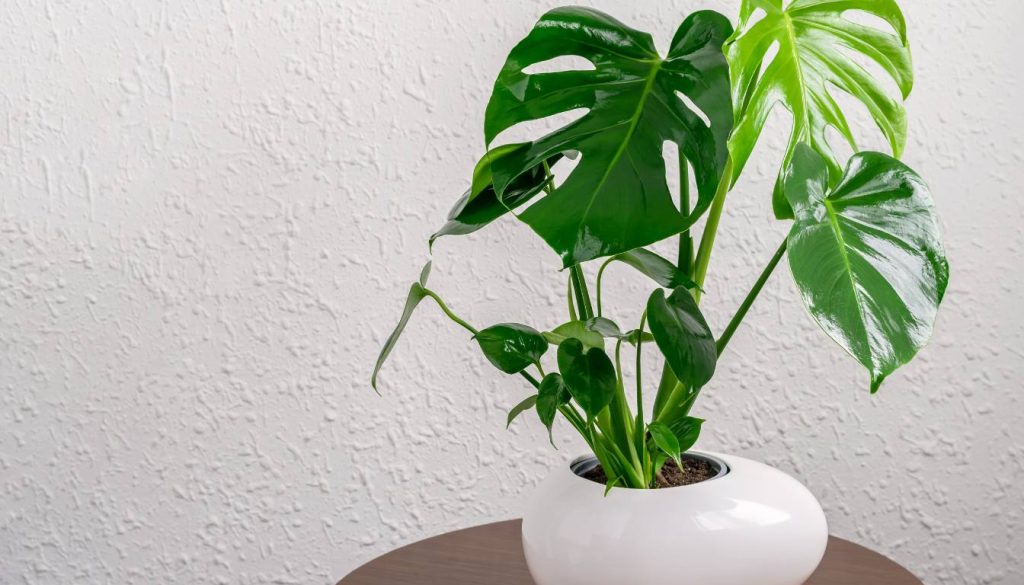
Maintaining your Monstera plant’s health and aesthetic appeal depends critically on preventing rust fungus. Here’s a detailed solution.
Choose Rust-free Plants when Purchasing
It’s critical to prevent rust fungus; therefore, when making a purchase, look for rust-free plants and be careful in monitoring your plants for early infection symptoms. Pay close attention to the plants you purchase, whether in a nursery or garden center.
The plant may have rust fungal infection if you notice any brown or orange patches on the leaves, stem, or flowers. It is advisable to be cautious and select an alternative plant if you see any suspicious spots. Rust is difficult to remove once it starts. Thus, it is usually preferable to start with a healthy plant that shows no symptoms of disease.
Environmental Management
For Monsteras, a humidity range of 40–60% is good. In regions with elevated humidity, dehumidifiers may prove advantageous. Making sure plants aren’t too near to one another and using a soft fan to increase air circulation is important.
Suitable Watering Methods
It is possible to avoid overwatering by ensuring the top two inches of soil are dry before applying water. It’s not only about the quantity but also the frequency. By immersing the pot in a tray of water, watering from the bottom can limit the likelihood of leaf moisture, which can contribute to fungal development.
Proper Maintenance
Ensuring proper maintenance is one of the most effective ways to prevent rust fungus on Monstera plants. This includes cleaning and disinfecting tools before using them on your plants. After thoroughly applying a disinfectant solution or rubbing alcohol, make sure to wash your equipment with soap and water that has both bactericidal and fungicidal properties.
- 29 Bucket Gardening Ideas for a Lush, Compact Garden - October 30, 2024
- 20+ Chic Boho Bedroom Ideas for a Cozy and Stylish Retreat - June 20, 2024
- 12+ Modern Boho Living Room Ideas to Create a Unique Oasis - June 10, 2024

